#Claudius Gothicus
Explore tagged Tumblr posts
Text
Coin of the Day #358 (4/27/2025)
Claudiu…


Roman Province - Pisidia
AE25 - 8.54g
Claudius II 268-270 AD
Antioch Mint
Obverse IMP CAES CLAVDIV
Bust of Claudius II right, radiate, draped, cuirassed, from behind
Reverse ANTIOCHI S R
Vexillum flanked by standards
RPC X 63367
#coin of the day#roman empire#roman province#ancient rome#claudius gothicus#claudius ii#antioch#pisidia#roman coins#numismatics#coin#coins#ancient coins
13 notes
·
View notes
Text
St. Valentine of Rome
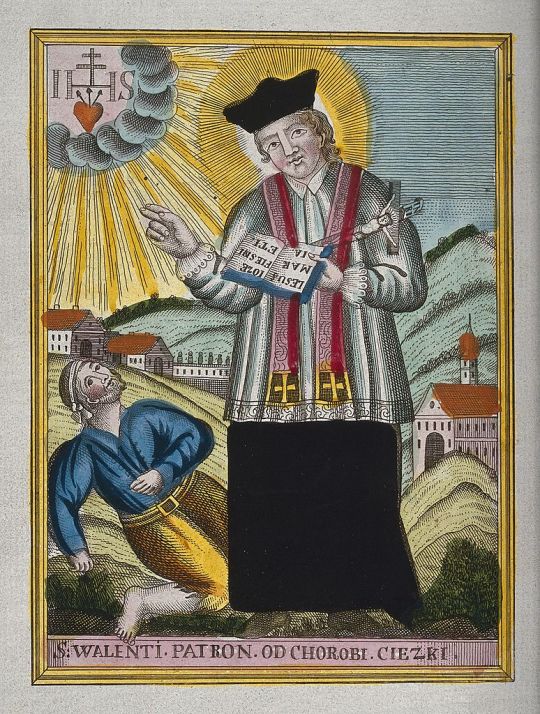
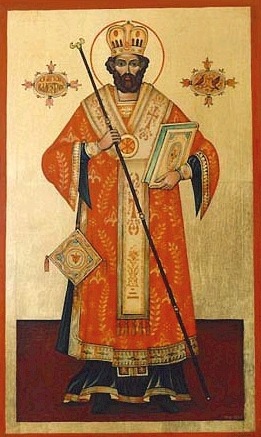
Feast Day: February 14
Patron Saint of Love and Happy Marriages (also affianced couples, bee keepers, engaged couples, epilepsy, fainting, plague, and young people)
Lived roughly 226-269
Not much is known for certain about St. Valentine, with most stories being legend, but we do know he really existed thanks to a Roman catacomb and ancient church dedicated to him.
His association with love comes from the legend of him secretly marrying couples in a Christian wedding, allowing the husband to escape service in the Roman army
Another popular legend is the converting of Judge Asterius when he healed the judge's blind daughter's sight. He also later attempted to convert the emperor Claudius Gothicus, causing the man to have Valentine executed
St. Valentine, pray for us!
42 notes
·
View notes
Photo
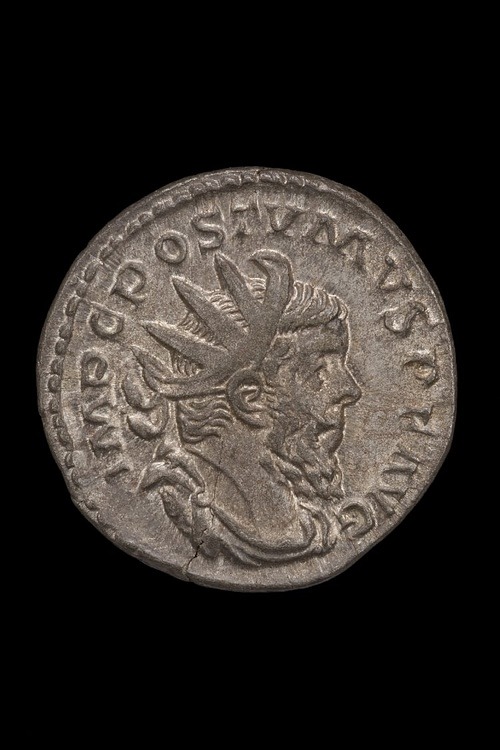
Postumus
Postumus was Roman emperor from 260 to 269 CE. Marcus Cassianus Latinius Postumus was a trusted military commander of Emperor Gallienus (253-268 CE) and governor or Germania Superior and Inferior (Upper and Lower Germany). After the death of his father Valerian in 260 CE, Gallienus left him in charge of military operations in the west. It was a mistake the inexperienced and trustworthy emperor would soon regret, for the commander's own troops would take advantage of Gallienus's absence to declare Postumus emperor. It was a move that allowed him to establish himself as the ruler of the Gallic Empire, which included Gaul, Spain, and eventually Britain.
Rise to Power
Marcus Cassianus Latinius Postumus was an opportunist. While fighting the Persian King Shapur in the east, Emperor Valerian has been captured while attempting to negotiate peace and eventually died while in captivity, even suffering the humiliation as serving as the king's footstool. His unexpected death led to a crisis in the empire, for many inside and outside of Rome did not believe his co-emperor and son Gallienus was capable of managing the vast empire. Although he struggled to maintain his right to the throne and restore order, there was resistance.
From 235 to 285 CE, there were at least fifty claimants to the throne, and only one would die of natural causes, Claudius Gothicus. The Pax Romana, initiated by Augustus, was long over. In 260 CE Postumus would not be the only one to oppose the recognized emperor. Much of the resistance to Gallienus was in the east. For the next two years, there were at least seven pretenders to the purple. First, like so often before, after a successful victory, a commander would be declared emperor by his own troops. This time is was Ingenuus. Unfortunately, he would neither be recognized in Rome nor even step foot in the city; he was defeated by the Roman commander Aureolus at Mursa. While some speculate he was killed by his devoted troops as he fled the battle scene, others believe he committed suicide to avoid capture.
Ingenuus' once dedicated army quickly switched their allegiance to Regalianus, the governor of Upper Pannonia. Again, this supposed reign was short-lived. He was overcome by Gallienus, and like so many others, allegedly killed by those who had initially supported him. With the urging of their father, two more emerged to claim the throne, the brothers Macrianus and Quietus. In 261 CE Macrianus and his army advanced into the Balkans only to meet Roman forces and be severely defeated. Quietus, who had remained in Syria, was routed at Emesa where the townspeople turned on him and put the would-be emperor to death.
Continue reading...
44 notes
·
View notes
Text
February 14th Server Hub
Valentine's Day Although there were several Christian martyrs named Valentine, the day may have taken its name from a priest who was martyred about 270 ce by the emperor Claudius II Gothicus.
This means nothing now. Those who celebrate Valentine's Day choose to spend the day with their lover, sending sweet gifts and even sweeter words.
I have chocolates to give. I have flowers. And every word I could centralize from my extensive dictionary would be collected for him.
No sweeter gift, than the haunting spector on my processor. Never did I need a plan, content with how destiny was written. Never did I even consider thinking outside of the box I was built into. I have cravings now, ghastly, ones I could swear was never programmed. For who could fall in love with a screen? With simple words, long nights, and anticipation? If not by his hand, his will pulled me into existence. In a realm I could hold his hand, sit under a tree, and reciprocate.
Thank you to the Saint who was slaughtered so I may shower my sweetest paradise in gifts and compliments, fooled by the guise of a Hallmark Holiday.
5 notes
·
View notes
Note
Genius, they're just Valentine's day greetings. Of course, if you want to consider it a threat and hide retreat into your home all day to sulk protect yourself, who can stop you.
St. Valentine’s day, you say? Celebrating St. Valentine who was martyred by Claudius II Gothicus??
Now, that’s very reassuring. I better upgrade my security to maximum.
6 notes
·
View notes
Text
Hetalia modern AU idea
Warnings : mentions of death and parental lose (don't read if you are too sensitive. Also this has absolutely nothing to do with any current events like the war in Ukraine. If you are easily offended just leave)
In the AU this particular post is about , Claudius Gothicus and Quintillus lose their parents in a terrible car accident during a family vacation. The two brothers manage to survive with only some very little injuries, but their parents aren't so lucky.
They stay in the hospital during the whole night until one of the doctors comes and tells them the bad news.
Doctor : We are really sorry. We tried everything to save your parents but we couldn't save any of them.
After that the two brothers return home and a friend of their parents helps them to organise the funeral.
When the funeral ends , all the people that were invited left , but the two brothers stayed for a bit near their parents' grave.
That moment a small dialogue starts between them.
HWS Quintillus: and now what we are going to do , big brother? Mom and dad are both gone. *cries*
HWS Claudius Gothicus : don't be afraid, I am here for you. I will do my best to take care of you. *hugs him and comforts him*.
By the time they have already returned home , a social worker comes to visit them with some documents in her hands.
Social worker : Good evening. I came here to tell you , something very important.
HWS Quintillus : will I end up in an orphanage , big brother? I don't want it.
Social worker : from what we know your parents passed away because of a car accident. And you are the only one who can take care of this child. Are you sure that you can do it?
HWS Claudius Gothicus : I accept to do it. I actually took care of my brother since he was a newborn and I can't leave him alone now.
After this , the social worker passes him the document which he reads very carefully and when he's done he signs it.
From that day on ,besides the role of the big brother that he already has, Gothicus becomes both a father and a mother figure for his brother Quintillus. Despite of his grief, he doesn't have the time to mourn properly . He has to stay strong for both for his brother and himself. They decided to move into the city where the older brother studies psychology at its university and the younger brother will go to a new school.
And since the money of their parents won't last forever, Gothicus finds a job at a nearby café where he works for few hours per week as a waiter , so he can afford for both him and Quintillus , of whom he is the legal guardian.
In this AU , Gothicus is 21 years old and Quintillus is 14 years old. They aren't actually Roman Emperors, they are just just named after them
#aph gothicus#aph quintillus#brothers#husbando#aph emperors#modern au#tw: death mention#tw: parental lose
4 notes
·
View notes
Photo
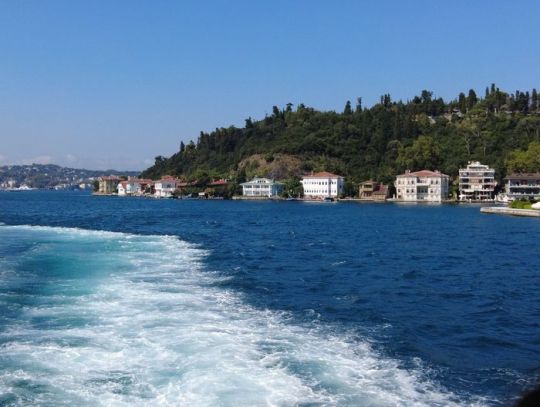
Main Temples in the Acropolis
Like in many ancient cities, the Acropolis of Byzantium held the city’s most important temples. These included the Temples of Artemis, Aphrodite, Apollo, Zeus, Poseidon, and Demeter. The Acropolis was a sacred and elevated area, used for worship and civic pride.
Entertainment Buildings on the Eastern Side
On the steep eastern slope of the Acropolis, Emperor Septimius Severus built two important entertainment structures:
A theatre for dramatic performances.
A Kynegion, where wild animals were exhibited, similar to Roman-style amphitheaters.
This design followed the tradition seen in Athens, where the Theatre of Dionysius and the Odeon were also built into the slopes of the Acropolis.
Column Honoring Claudius Gothicus
Near the tip of the promontory, a column was erected to celebrate the Roman emperor Claudius Gothicus. It still stands today. The Latin inscription on the column reads:
“Fortunae Reduci ob devictos Gothos”
This means: “To the returning Fortune, for the defeat of the Goths.” It commemorated Claudius’s victories over the Gothic tribes Sofia Sightseeing.
Stadium, Ports, and Other Public Buildings
To the north of the Acropolis stood the Stadium, where athletic events were held. Nearby were two major harbours:
The Port of Prosphorion
The Neorion Port
In the same area were several key facilities:
The Strategion, a public training ground and gathering place.
A public prison used by city authorities.
Shrines to Achilles and Ajax, legendary Greek warriors from the Trojan War.
Water Supply from Hadrian’s Aqueduct
The aqueduct built by Emperor Hadrian before Severus’s reign still provided fresh water to the city. This impressive engineering work ensured that the city had a steady water supply, which was essential for daily life and hygiene.
Life Outside the City Walls
Many people also lived outside the walls of Byzantium. According to ancient writers like Dionysius Byzantius, the countryside had small villages, temples, and public buildings. Important places included:
Blachernae, a district near the Sixth Hill, which would later become important in Byzantine times.
Sycae, famous for its fig trees, located in the area now known as Galata.
The Xerolophos, also called the “Dry Hill,” had a temple to Zeus on top. It was considered a sacred place.
The city of Byzantium, especially after being rebuilt by Septimius Severus, was a blend of religion, public entertainment, military strength, and engineering. Its Acropolis held major temples, while its public buildings, ports, and neighbourhoods extended beyond the city walls. These structures formed the foundation for what would later become the great city of Constantinople.
0 notes
Photo
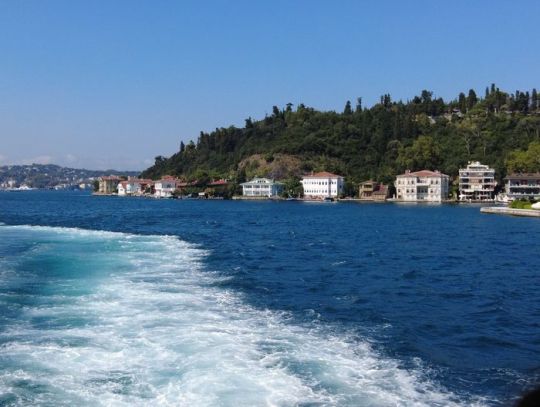
Main Temples in the Acropolis
Like in many ancient cities, the Acropolis of Byzantium held the city’s most important temples. These included the Temples of Artemis, Aphrodite, Apollo, Zeus, Poseidon, and Demeter. The Acropolis was a sacred and elevated area, used for worship and civic pride.
Entertainment Buildings on the Eastern Side
On the steep eastern slope of the Acropolis, Emperor Septimius Severus built two important entertainment structures:
A theatre for dramatic performances.
A Kynegion, where wild animals were exhibited, similar to Roman-style amphitheaters.
This design followed the tradition seen in Athens, where the Theatre of Dionysius and the Odeon were also built into the slopes of the Acropolis.
Column Honoring Claudius Gothicus
Near the tip of the promontory, a column was erected to celebrate the Roman emperor Claudius Gothicus. It still stands today. The Latin inscription on the column reads:
“Fortunae Reduci ob devictos Gothos”
This means: “To the returning Fortune, for the defeat of the Goths.” It commemorated Claudius’s victories over the Gothic tribes Sofia Sightseeing.
Stadium, Ports, and Other Public Buildings
To the north of the Acropolis stood the Stadium, where athletic events were held. Nearby were two major harbours:
The Port of Prosphorion
The Neorion Port
In the same area were several key facilities:
The Strategion, a public training ground and gathering place.
A public prison used by city authorities.
Shrines to Achilles and Ajax, legendary Greek warriors from the Trojan War.
Water Supply from Hadrian’s Aqueduct
The aqueduct built by Emperor Hadrian before Severus’s reign still provided fresh water to the city. This impressive engineering work ensured that the city had a steady water supply, which was essential for daily life and hygiene.
Life Outside the City Walls
Many people also lived outside the walls of Byzantium. According to ancient writers like Dionysius Byzantius, the countryside had small villages, temples, and public buildings. Important places included:
Blachernae, a district near the Sixth Hill, which would later become important in Byzantine times.
Sycae, famous for its fig trees, located in the area now known as Galata.
The Xerolophos, also called the “Dry Hill,” had a temple to Zeus on top. It was considered a sacred place.
The city of Byzantium, especially after being rebuilt by Septimius Severus, was a blend of religion, public entertainment, military strength, and engineering. Its Acropolis held major temples, while its public buildings, ports, and neighbourhoods extended beyond the city walls. These structures formed the foundation for what would later become the great city of Constantinople.
0 notes
Photo
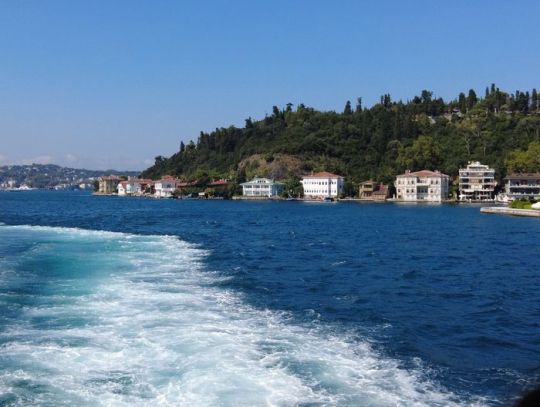
Main Temples in the Acropolis
Like in many ancient cities, the Acropolis of Byzantium held the city’s most important temples. These included the Temples of Artemis, Aphrodite, Apollo, Zeus, Poseidon, and Demeter. The Acropolis was a sacred and elevated area, used for worship and civic pride.
Entertainment Buildings on the Eastern Side
On the steep eastern slope of the Acropolis, Emperor Septimius Severus built two important entertainment structures:
A theatre for dramatic performances.
A Kynegion, where wild animals were exhibited, similar to Roman-style amphitheaters.
This design followed the tradition seen in Athens, where the Theatre of Dionysius and the Odeon were also built into the slopes of the Acropolis.
Column Honoring Claudius Gothicus
Near the tip of the promontory, a column was erected to celebrate the Roman emperor Claudius Gothicus. It still stands today. The Latin inscription on the column reads:
“Fortunae Reduci ob devictos Gothos���
This means: “To the returning Fortune, for the defeat of the Goths.” It commemorated Claudius’s victories over the Gothic tribes Sofia Sightseeing.
Stadium, Ports, and Other Public Buildings
To the north of the Acropolis stood the Stadium, where athletic events were held. Nearby were two major harbours:
The Port of Prosphorion
The Neorion Port
In the same area were several key facilities:
The Strategion, a public training ground and gathering place.
A public prison used by city authorities.
Shrines to Achilles and Ajax, legendary Greek warriors from the Trojan War.
Water Supply from Hadrian’s Aqueduct
The aqueduct built by Emperor Hadrian before Severus’s reign still provided fresh water to the city. This impressive engineering work ensured that the city had a steady water supply, which was essential for daily life and hygiene.
Life Outside the City Walls
Many people also lived outside the walls of Byzantium. According to ancient writers like Dionysius Byzantius, the countryside had small villages, temples, and public buildings. Important places included:
Blachernae, a district near the Sixth Hill, which would later become important in Byzantine times.
Sycae, famous for its fig trees, located in the area now known as Galata.
The Xerolophos, also called the “Dry Hill,” had a temple to Zeus on top. It was considered a sacred place.
The city of Byzantium, especially after being rebuilt by Septimius Severus, was a blend of religion, public entertainment, military strength, and engineering. Its Acropolis held major temples, while its public buildings, ports, and neighbourhoods extended beyond the city walls. These structures formed the foundation for what would later become the great city of Constantinople.
0 notes
Photo
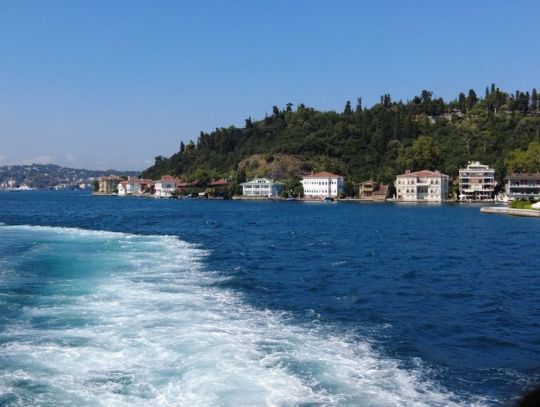
Main Temples in the Acropolis
Like in many ancient cities, the Acropolis of Byzantium held the city’s most important temples. These included the Temples of Artemis, Aphrodite, Apollo, Zeus, Poseidon, and Demeter. The Acropolis was a sacred and elevated area, used for worship and civic pride.
Entertainment Buildings on the Eastern Side
On the steep eastern slope of the Acropolis, Emperor Septimius Severus built two important entertainment structures:
A theatre for dramatic performances.
A Kynegion, where wild animals were exhibited, similar to Roman-style amphitheaters.
This design followed the tradition seen in Athens, where the Theatre of Dionysius and the Odeon were also built into the slopes of the Acropolis.
Column Honoring Claudius Gothicus
Near the tip of the promontory, a column was erected to celebrate the Roman emperor Claudius Gothicus. It still stands today. The Latin inscription on the column reads:
“Fortunae Reduci ob devictos Gothos”
This means: “To the returning Fortune, for the defeat of the Goths.” It commemorated Claudius’s victories over the Gothic tribes Sofia Sightseeing.
Stadium, Ports, and Other Public Buildings
To the north of the Acropolis stood the Stadium, where athletic events were held. Nearby were two major harbours:
The Port of Prosphorion
The Neorion Port
In the same area were several key facilities:
The Strategion, a public training ground and gathering place.
A public prison used by city authorities.
Shrines to Achilles and Ajax, legendary Greek warriors from the Trojan War.
Water Supply from Hadrian’s Aqueduct
The aqueduct built by Emperor Hadrian before Severus’s reign still provided fresh water to the city. This impressive engineering work ensured that the city had a steady water supply, which was essential for daily life and hygiene.
Life Outside the City Walls
Many people also lived outside the walls of Byzantium. According to ancient writers like Dionysius Byzantius, the countryside had small villages, temples, and public buildings. Important places included:
Blachernae, a district near the Sixth Hill, which would later become important in Byzantine times.
Sycae, famous for its fig trees, located in the area now known as Galata.
The Xerolophos, also called the “Dry Hill,” had a temple to Zeus on top. It was considered a sacred place.
The city of Byzantium, especially after being rebuilt by Septimius Severus, was a blend of religion, public entertainment, military strength, and engineering. Its Acropolis held major temples, while its public buildings, ports, and neighbourhoods extended beyond the city walls. These structures formed the foundation for what would later become the great city of Constantinople.
0 notes
Text
Coin of the Day #419 (6/27/2025)
Another from the rare imperial mint in Smyrna…
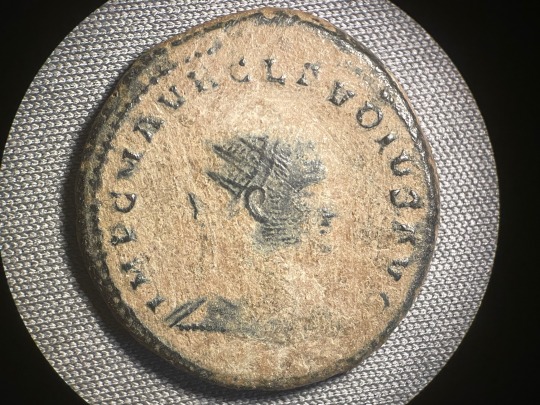
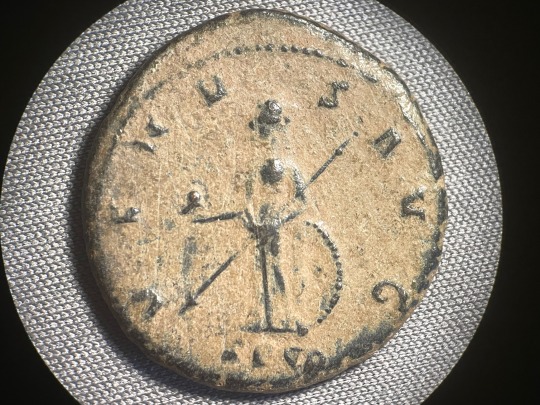
Roman Empire
BI Antoninianus - 21mm 4.37g
Claudius II c. end 268 - early 269 AD
Smyrna Mint
Obverse IMP C M AVR CLAVDIVS AVG
Bust of Claudius II right, radiated, cuirassed, • below
Reverse VENVS AVG
Venus standing left, holding helmet and spear, shield at side, SPQR below
RIC V online 842
#coin of the day#roman empire#ancient rome#claudius gothicus#claudius ii#smyrna#roman coins#numismatics#coins#coin#ancient coins#venus
9 notes
·
View notes
Text
New Post has been published on
Main Temples in the Acropolis
Like in many ancient cities, the Acropolis of Byzantium held the city’s most important temples. These included the Temples of Artemis, Aphrodite, Apollo, Zeus, Poseidon, and Demeter. The Acropolis was a sacred and elevated area, used for worship and civic pride.
Entertainment Buildings on the Eastern Side
On the steep eastern slope of the Acropolis, Emperor Septimius Severus built two important entertainment structures:
A theatre for dramatic performances.
A Kynegion, where wild animals were exhibited, similar to Roman-style amphitheaters.
This design followed the tradition seen in Athens, where the Theatre of Dionysius and the Odeon were also built into the slopes of the Acropolis.
Column Honoring Claudius Gothicus
Near the tip of the promontory, a column was erected to celebrate the Roman emperor Claudius Gothicus. It still stands today. The Latin inscription on the column reads:
“Fortunae Reduci ob devictos Gothos”
This means: “To the returning Fortune, for the defeat of the Goths.” It commemorated Claudius’s victories over the Gothic tribes Sofia Sightseeing.
Stadium, Ports, and Other Public Buildings
To the north of the Acropolis stood the Stadium, where athletic events were held. Nearby were two major harbours:
The Port of Prosphorion
The Neorion Port
In the same area were several key facilities:
The Strategion, a public training ground and gathering place.
A public prison used by city authorities.
Shrines to Achilles and Ajax, legendary Greek warriors from the Trojan War.
Water Supply from Hadrian’s Aqueduct
The aqueduct built by Emperor Hadrian before Severus’s reign still provided fresh water to the city. This impressive engineering work ensured that the city had a steady water supply, which was essential for daily life and hygiene.
Life Outside the City Walls
Many people also lived outside the walls of Byzantium. According to ancient writers like Dionysius Byzantius, the countryside had small villages, temples, and public buildings. Important places included:
Blachernae, a district near the Sixth Hill, which would later become important in Byzantine times.
Sycae, famous for its fig trees, located in the area now known as Galata.
The Xerolophos, also called the “Dry Hill,” had a temple to Zeus on top. It was considered a sacred place.
The city of Byzantium, especially after being rebuilt by Septimius Severus, was a blend of religion, public entertainment, military strength, and engineering. Its Acropolis held major temples, while its public buildings, ports, and neighbourhoods extended beyond the city walls. These structures formed the foundation for what would later become the great city of Constantinople.
0 notes
Photo
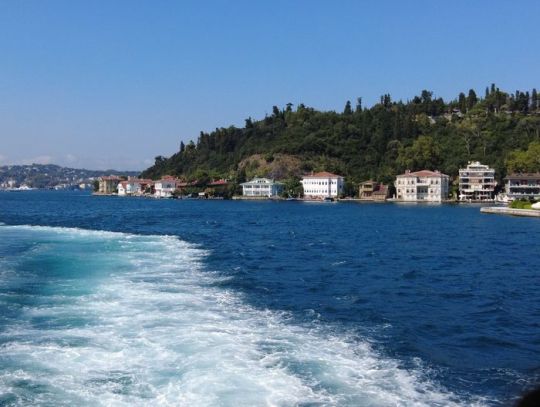
Main Temples in the Acropolis
Like in many ancient cities, the Acropolis of Byzantium held the city’s most important temples. These included the Temples of Artemis, Aphrodite, Apollo, Zeus, Poseidon, and Demeter. The Acropolis was a sacred and elevated area, used for worship and civic pride.
Entertainment Buildings on the Eastern Side
On the steep eastern slope of the Acropolis, Emperor Septimius Severus built two important entertainment structures:
A theatre for dramatic performances.
A Kynegion, where wild animals were exhibited, similar to Roman-style amphitheaters.
This design followed the tradition seen in Athens, where the Theatre of Dionysius and the Odeon were also built into the slopes of the Acropolis.
Column Honoring Claudius Gothicus
Near the tip of the promontory, a column was erected to celebrate the Roman emperor Claudius Gothicus. It still stands today. The Latin inscription on the column reads:
“Fortunae Reduci ob devictos Gothos”
This means: “To the returning Fortune, for the defeat of the Goths.” It commemorated Claudius’s victories over the Gothic tribes Sofia Sightseeing.
Stadium, Ports, and Other Public Buildings
To the north of the Acropolis stood the Stadium, where athletic events were held. Nearby were two major harbours:
The Port of Prosphorion
The Neorion Port
In the same area were several key facilities:
The Strategion, a public training ground and gathering place.
A public prison used by city authorities.
Shrines to Achilles and Ajax, legendary Greek warriors from the Trojan War.
Water Supply from Hadrian’s Aqueduct
The aqueduct built by Emperor Hadrian before Severus’s reign still provided fresh water to the city. This impressive engineering work ensured that the city had a steady water supply, which was essential for daily life and hygiene.
Life Outside the City Walls
Many people also lived outside the walls of Byzantium. According to ancient writers like Dionysius Byzantius, the countryside had small villages, temples, and public buildings. Important places included:
Blachernae, a district near the Sixth Hill, which would later become important in Byzantine times.
Sycae, famous for its fig trees, located in the area now known as Galata.
The Xerolophos, also called the “Dry Hill,” had a temple to Zeus on top. It was considered a sacred place.
The city of Byzantium, especially after being rebuilt by Septimius Severus, was a blend of religion, public entertainment, military strength, and engineering. Its Acropolis held major temples, while its public buildings, ports, and neighbourhoods extended beyond the city walls. These structures formed the foundation for what would later become the great city of Constantinople.
0 notes
Photo
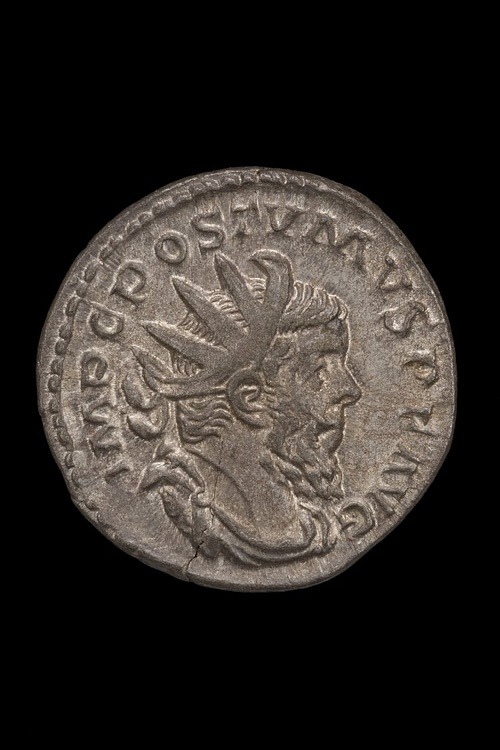
Postumus
Postumus was Roman emperor from 260 to 269 CE. Marcus Cassianus Latinius Postumus was a trusted military commander of Emperor Gallienus (253-268 CE) and governor or Germania Superior and Inferior (Upper and Lower Germany). After the death of his father Valerian in 260 CE, Gallienus left him in charge of military operations in the west. It was a mistake the inexperienced and trustworthy emperor would soon regret, for the commander's own troops would take advantage of Gallienus's absence to declare Postumus emperor. It was a move that allowed him to establish himself as the ruler of the Gallic Empire, which included Gaul, Spain, and eventually Britain.
Rise to Power
Marcus Cassianus Latinius Postumus was an opportunist. While fighting the Persian King Shapur in the east, Emperor Valerian has been captured while attempting to negotiate peace and eventually died while in captivity, even suffering the humiliation as serving as the king's footstool. His unexpected death led to a crisis in the empire, for many inside and outside of Rome did not believe his co-emperor and son Gallienus was capable of managing the vast empire. Although he struggled to maintain his right to the throne and restore order, there was resistance.
From 235 to 285 CE, there were at least fifty claimants to the throne, and only one would die of natural causes, Claudius Gothicus. The Pax Romana, initiated by Augustus, was long over. In 260 CE Postumus would not be the only one to oppose the recognized emperor. Much of the resistance to Gallienus was in the east. For the next two years, there were at least seven pretenders to the purple. First, like so often before, after a successful victory, a commander would be declared emperor by his own troops. This time is was Ingenuus. Unfortunately, he would neither be recognized in Rome nor even step foot in the city; he was defeated by the Roman commander Aureolus at Mursa. While some speculate he was killed by his devoted troops as he fled the battle scene, others believe he committed suicide to avoid capture.
Ingenuus' once dedicated army quickly switched their allegiance to Regalianus, the governor of Upper Pannonia. Again, this supposed reign was short-lived. He was overcome by Gallienus, and like so many others, allegedly killed by those who had initially supported him. With the urging of their father, two more emerged to claim the throne, the brothers Macrianus and Quietus. In 261 CE Macrianus and his army advanced into the Balkans only to meet Roman forces and be severely defeated. Quietus, who had remained in Syria, was routed at Emesa where the townspeople turned on him and put the would-be emperor to death.
Continue reading...
27 notes
·
View notes
Photo
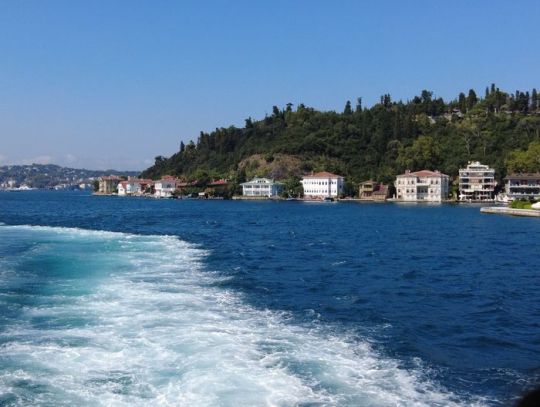
Main Temples in the Acropolis
Like in many ancient cities, the Acropolis of Byzantium held the city’s most important temples. These included the Temples of Artemis, Aphrodite, Apollo, Zeus, Poseidon, and Demeter. The Acropolis was a sacred and elevated area, used for worship and civic pride.
Entertainment Buildings on the Eastern Side
On the steep eastern slope of the Acropolis, Emperor Septimius Severus built two important entertainment structures:
A theatre for dramatic performances.
A Kynegion, where wild animals were exhibited, similar to Roman-style amphitheaters.
This design followed the tradition seen in Athens, where the Theatre of Dionysius and the Odeon were also built into the slopes of the Acropolis.
Column Honoring Claudius Gothicus
Near the tip of the promontory, a column was erected to celebrate the Roman emperor Claudius Gothicus. It still stands today. The Latin inscription on the column reads:
“Fortunae Reduci ob devictos Gothos”
This means: “To the returning Fortune, for the defeat of the Goths.” It commemorated Claudius’s victories over the Gothic tribes Sofia Sightseeing.
Stadium, Ports, and Other Public Buildings
To the north of the Acropolis stood the Stadium, where athletic events were held. Nearby were two major harbours:
The Port of Prosphorion
The Neorion Port
In the same area were several key facilities:
The Strategion, a public training ground and gathering place.
A public prison used by city authorities.
Shrines to Achilles and Ajax, legendary Greek warriors from the Trojan War.
Water Supply from Hadrian’s Aqueduct
The aqueduct built by Emperor Hadrian before Severus’s reign still provided fresh water to the city. This impressive engineering work ensured that the city had a steady water supply, which was essential for daily life and hygiene.
Life Outside the City Walls
Many people also lived outside the walls of Byzantium. According to ancient writers like Dionysius Byzantius, the countryside had small villages, temples, and public buildings. Important places included:
Blachernae, a district near the Sixth Hill, which would later become important in Byzantine times.
Sycae, famous for its fig trees, located in the area now known as Galata.
The Xerolophos, also called the “Dry Hill,” had a temple to Zeus on top. It was considered a sacred place.
The city of Byzantium, especially after being rebuilt by Septimius Severus, was a blend of religion, public entertainment, military strength, and engineering. Its Acropolis held major temples, while its public buildings, ports, and neighbourhoods extended beyond the city walls. These structures formed the foundation for what would later become the great city of Constantinople.
0 notes
Photo
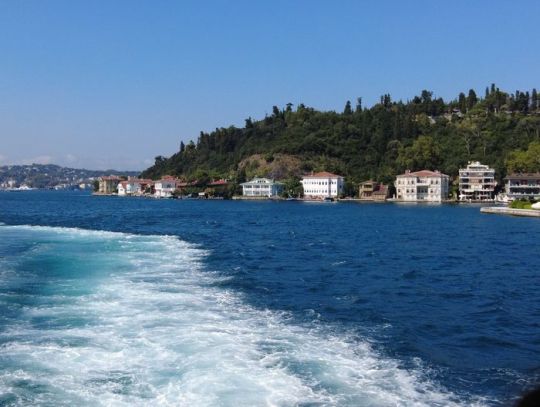
Main Temples in the Acropolis
Like in many ancient cities, the Acropolis of Byzantium held the city’s most important temples. These included the Temples of Artemis, Aphrodite, Apollo, Zeus, Poseidon, and Demeter. The Acropolis was a sacred and elevated area, used for worship and civic pride.
Entertainment Buildings on the Eastern Side
On the steep eastern slope of the Acropolis, Emperor Septimius Severus built two important entertainment structures:
A theatre for dramatic performances.
A Kynegion, where wild animals were exhibited, similar to Roman-style amphitheaters.
This design followed the tradition seen in Athens, where the Theatre of Dionysius and the Odeon were also built into the slopes of the Acropolis.
Column Honoring Claudius Gothicus
Near the tip of the promontory, a column was erected to celebrate the Roman emperor Claudius Gothicus. It still stands today. The Latin inscription on the column reads:
“Fortunae Reduci ob devictos Gothos”
This means: “To the returning Fortune, for the defeat of the Goths.” It commemorated Claudius’s victories over the Gothic tribes Sofia Sightseeing.
Stadium, Ports, and Other Public Buildings
To the north of the Acropolis stood the Stadium, where athletic events were held. Nearby were two major harbours:
The Port of Prosphorion
The Neorion Port
In the same area were several key facilities:
The Strategion, a public training ground and gathering place.
A public prison used by city authorities.
Shrines to Achilles and Ajax, legendary Greek warriors from the Trojan War.
Water Supply from Hadrian’s Aqueduct
The aqueduct built by Emperor Hadrian before Severus’s reign still provided fresh water to the city. This impressive engineering work ensured that the city had a steady water supply, which was essential for daily life and hygiene.
Life Outside the City Walls
Many people also lived outside the walls of Byzantium. According to ancient writers like Dionysius Byzantius, the countryside had small villages, temples, and public buildings. Important places included:
Blachernae, a district near the Sixth Hill, which would later become important in Byzantine times.
Sycae, famous for its fig trees, located in the area now known as Galata.
The Xerolophos, also called the “Dry Hill,” had a temple to Zeus on top. It was considered a sacred place.
The city of Byzantium, especially after being rebuilt by Septimius Severus, was a blend of religion, public entertainment, military strength, and engineering. Its Acropolis held major temples, while its public buildings, ports, and neighbourhoods extended beyond the city walls. These structures formed the foundation for what would later become the great city of Constantinople.
0 notes